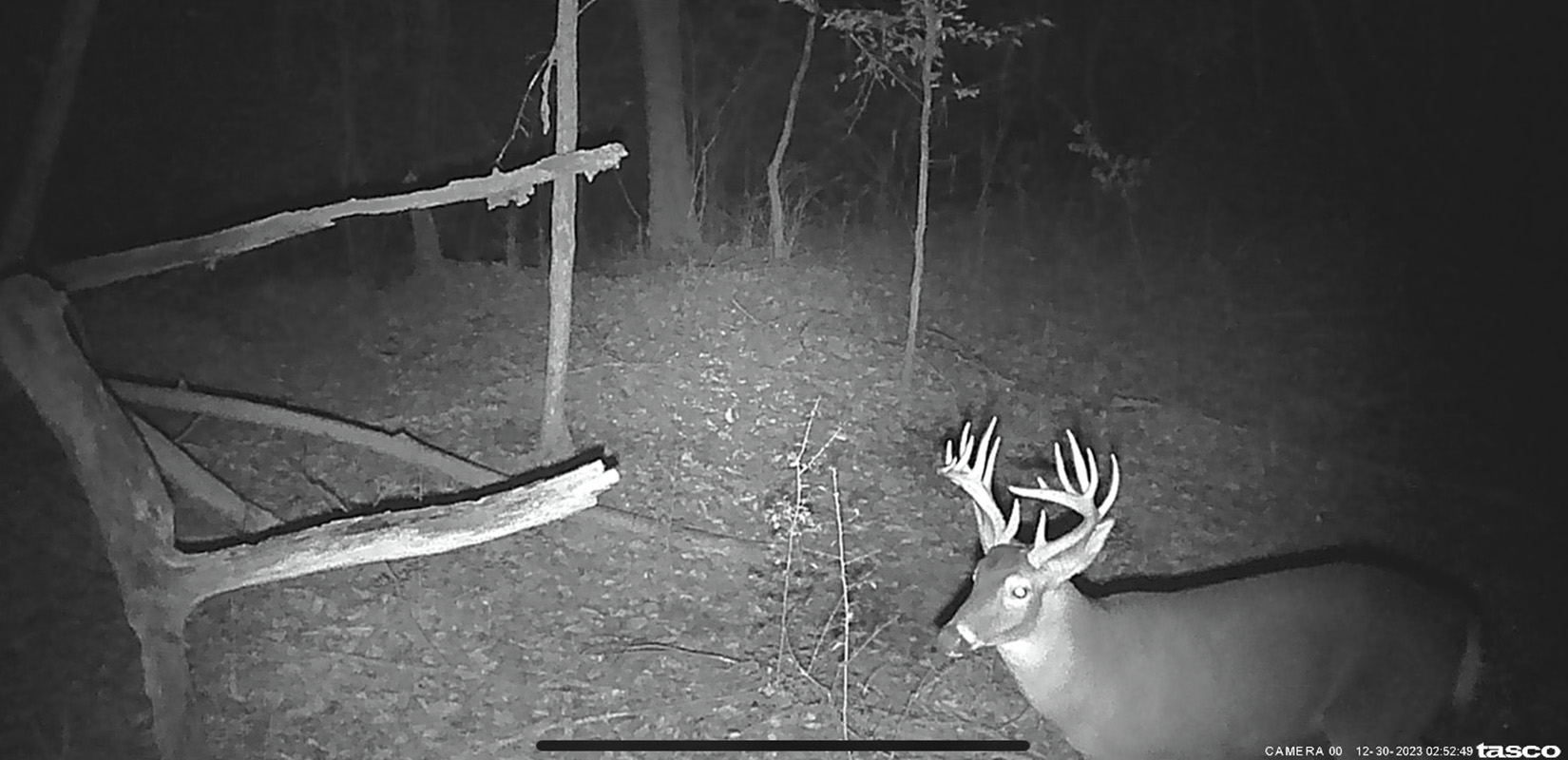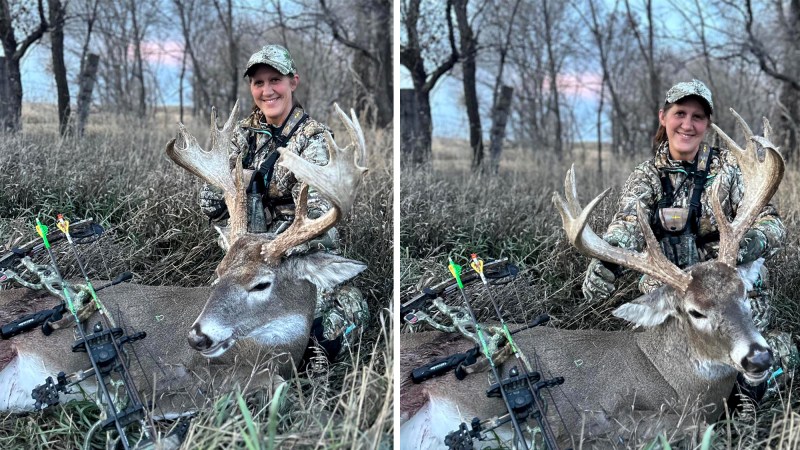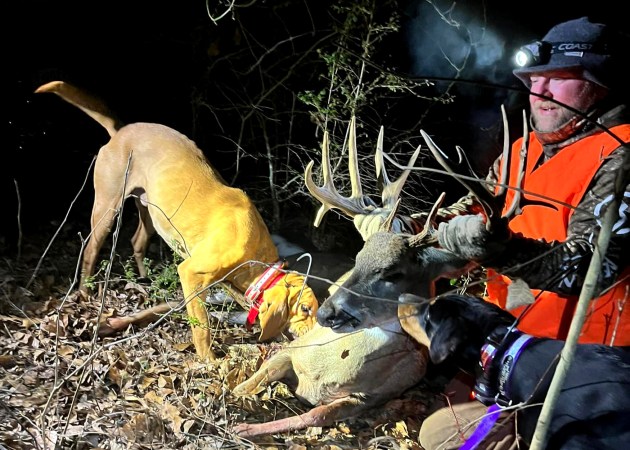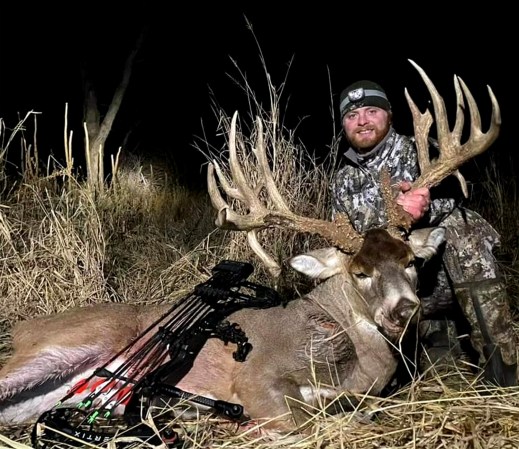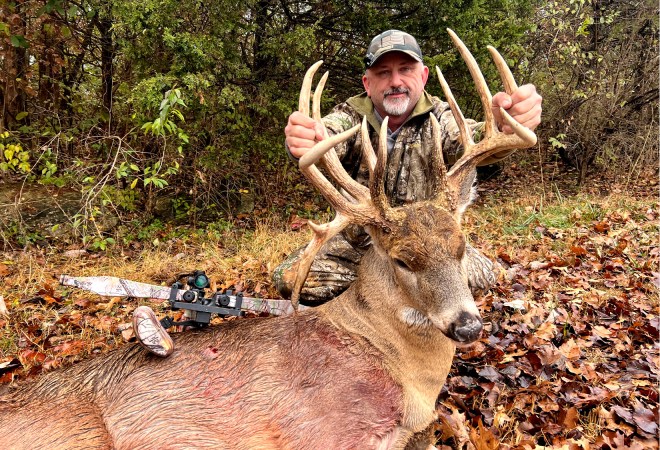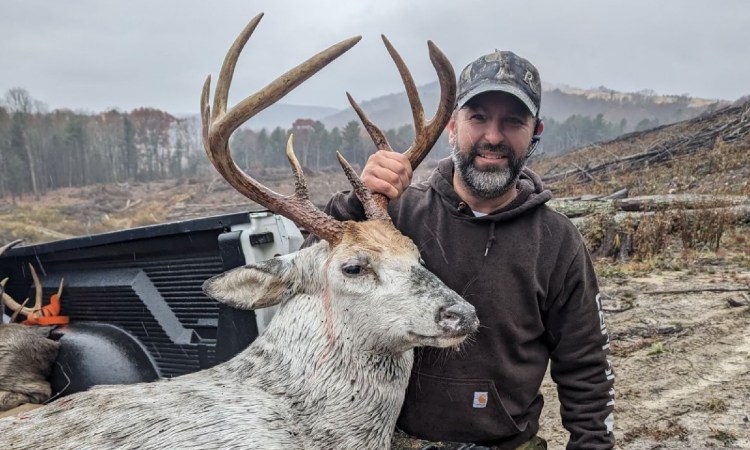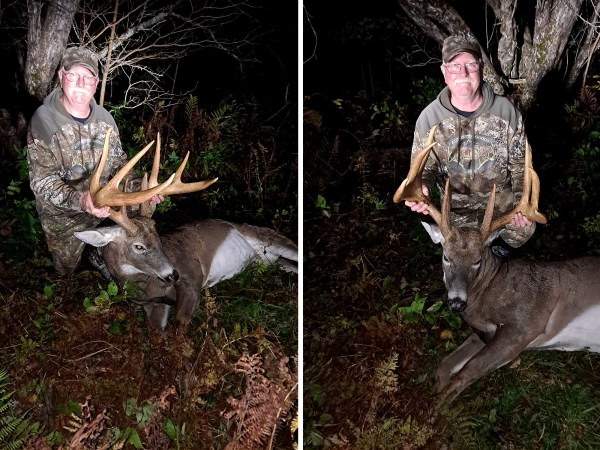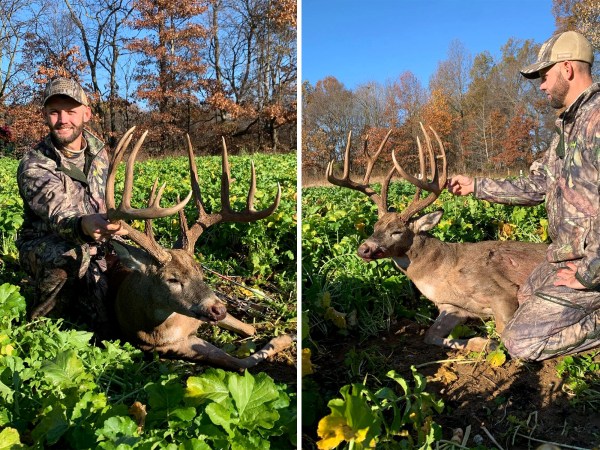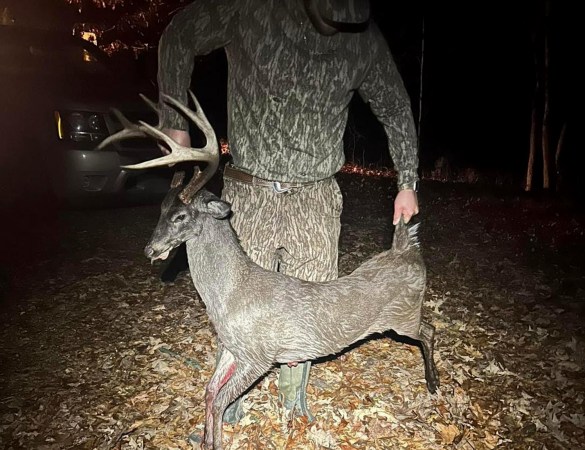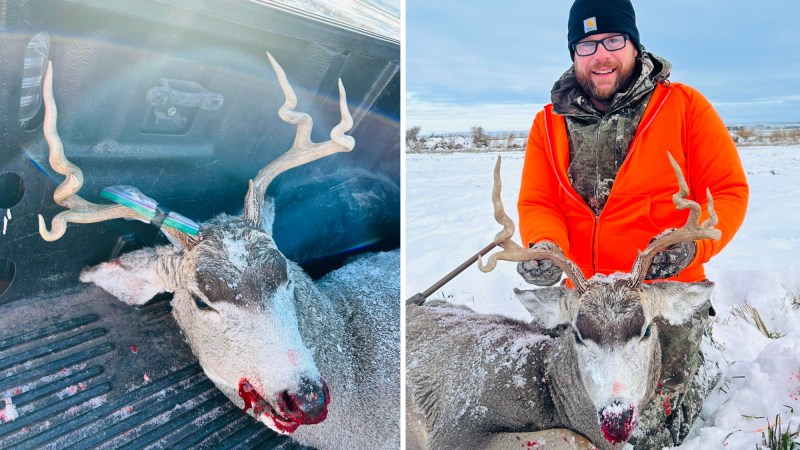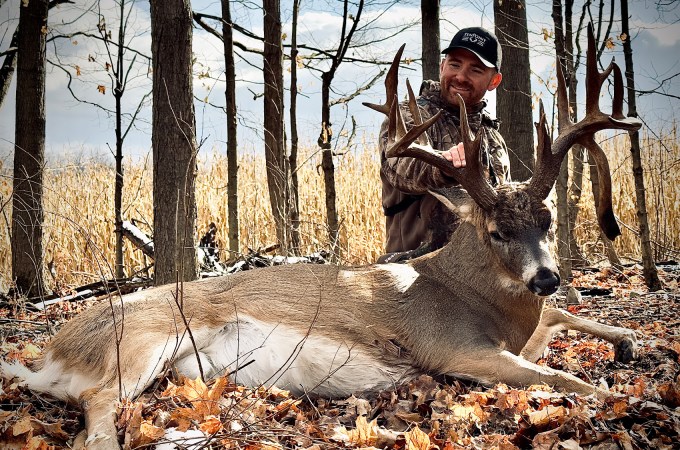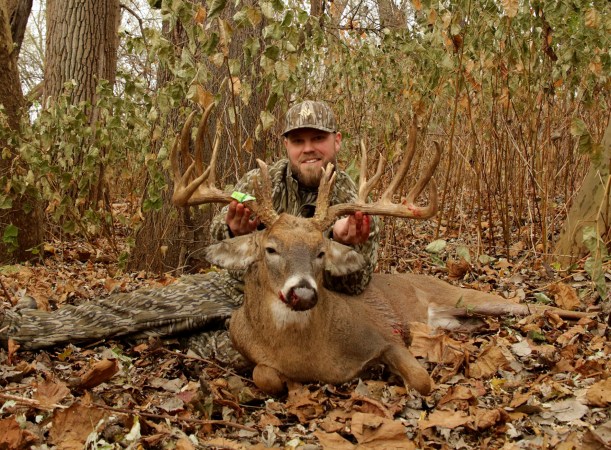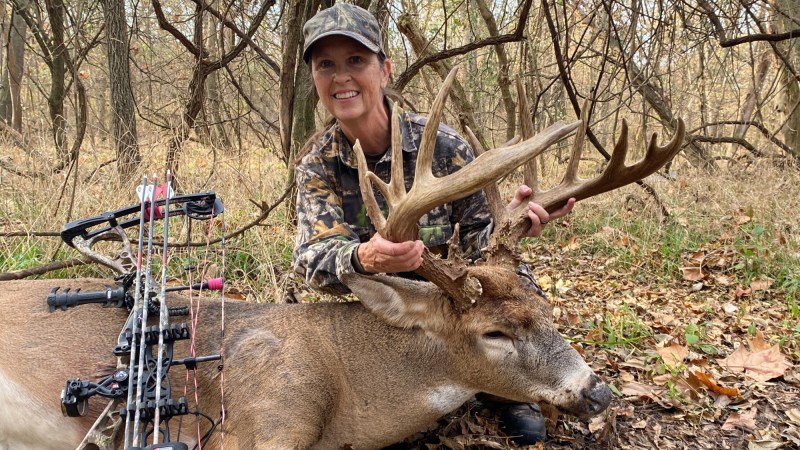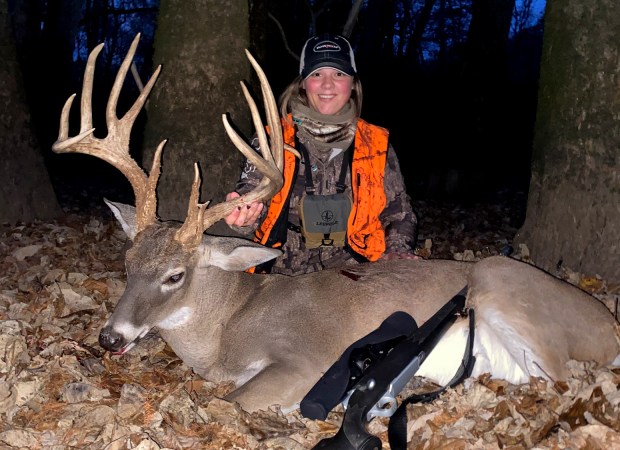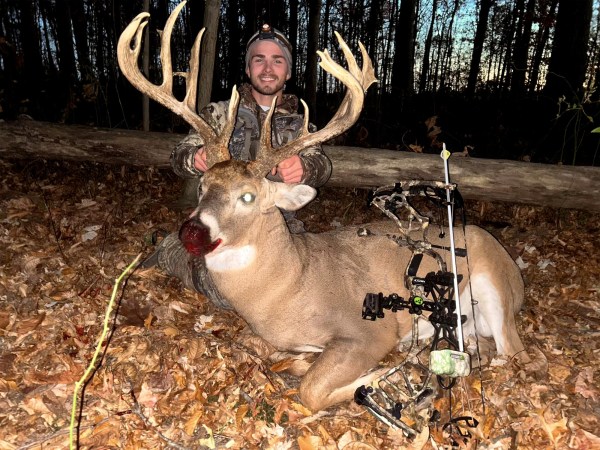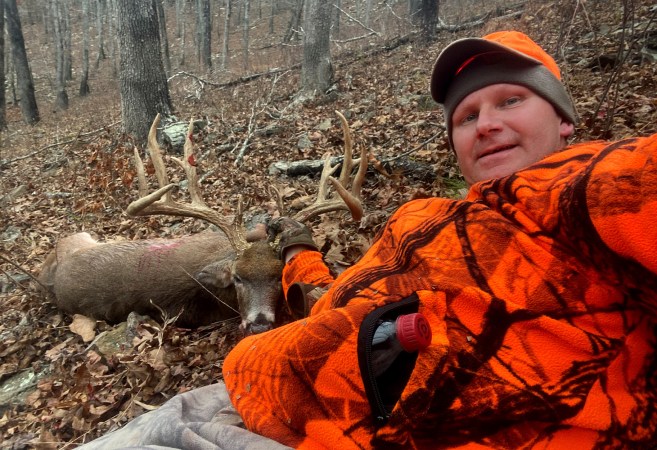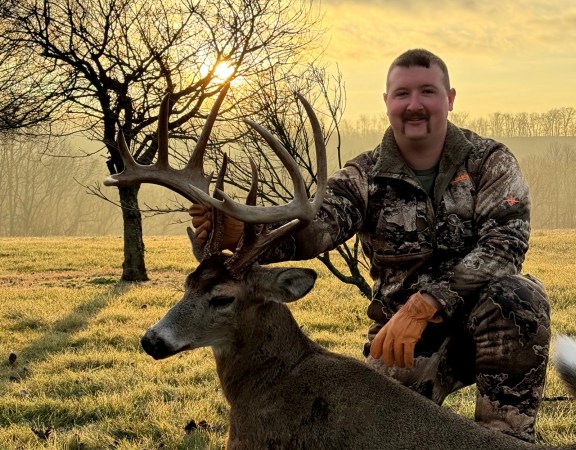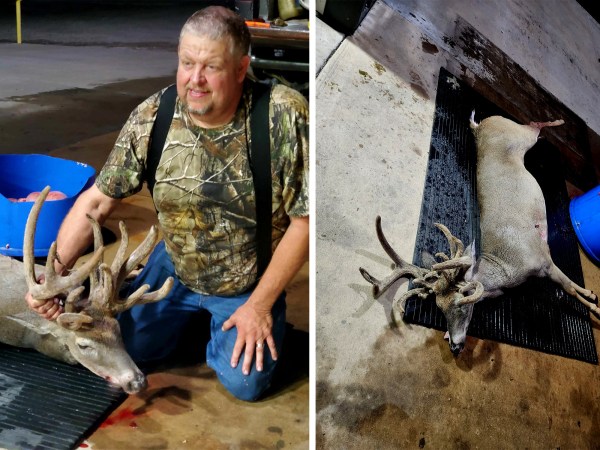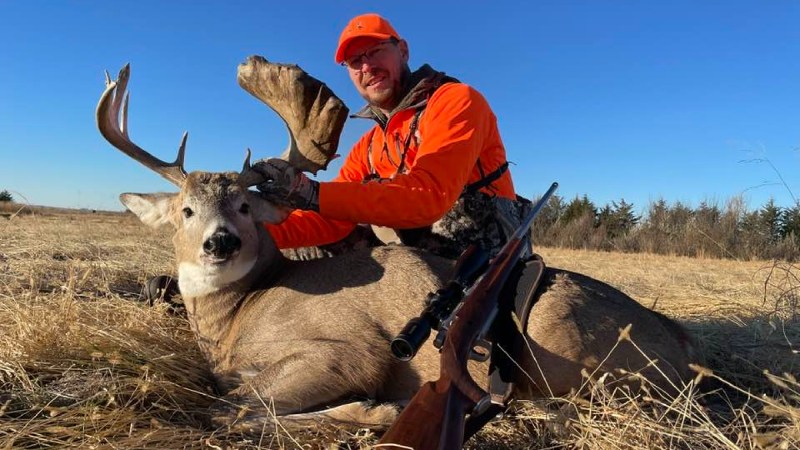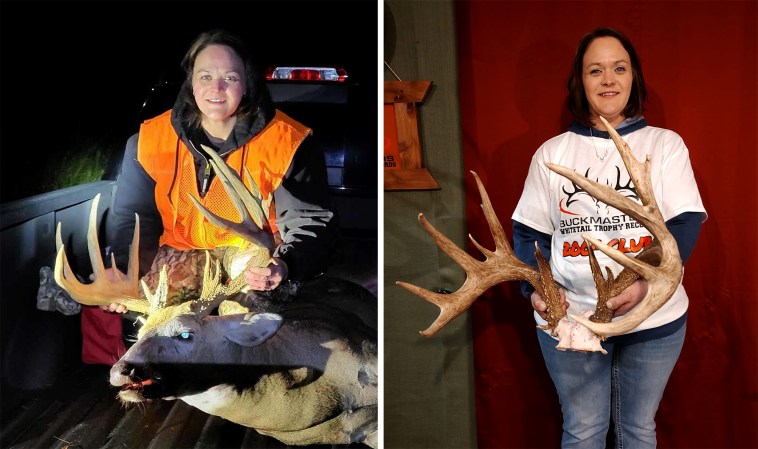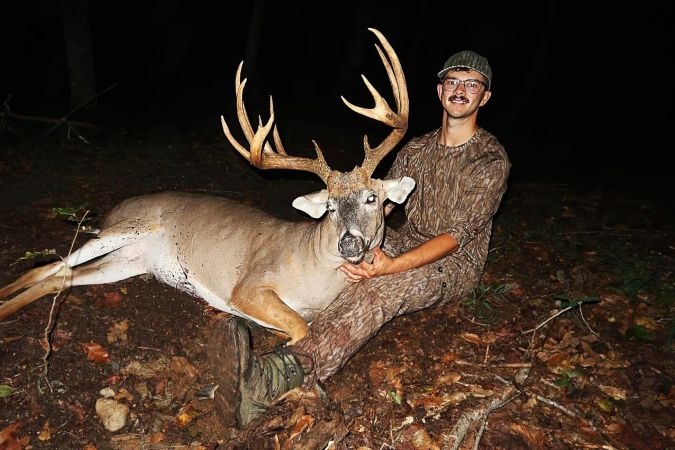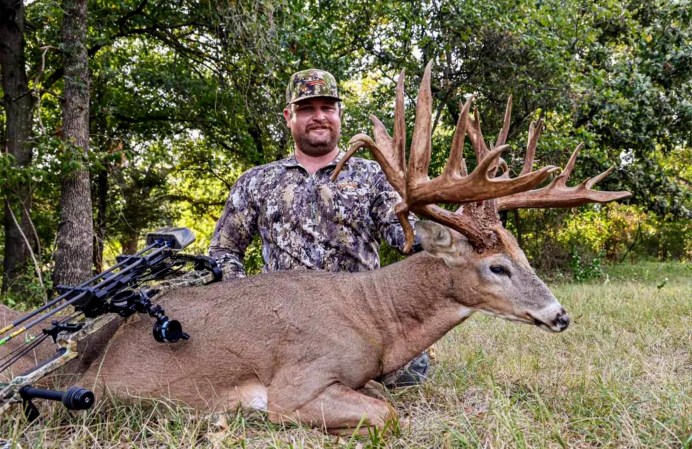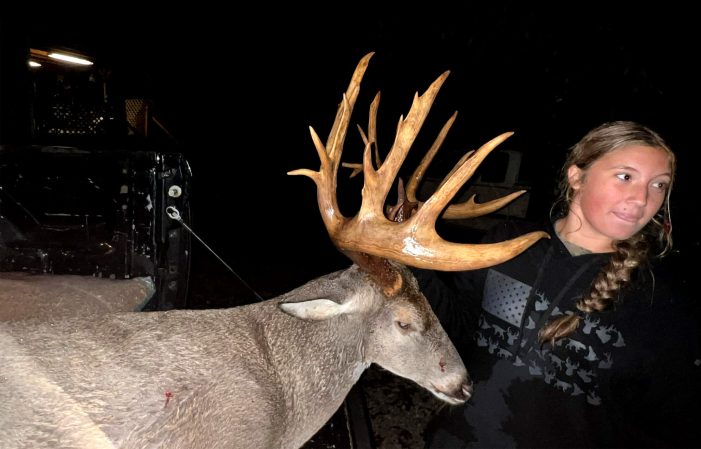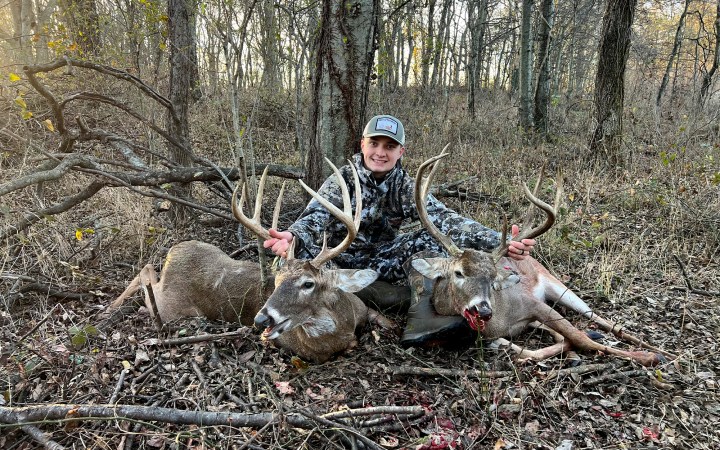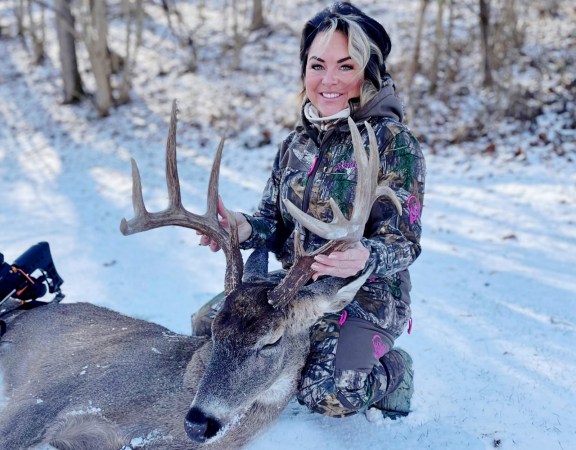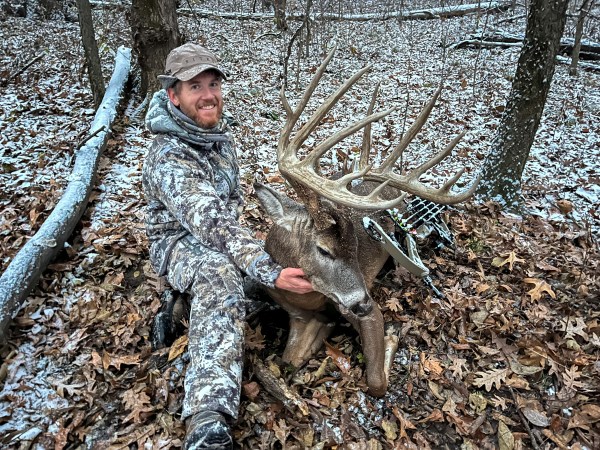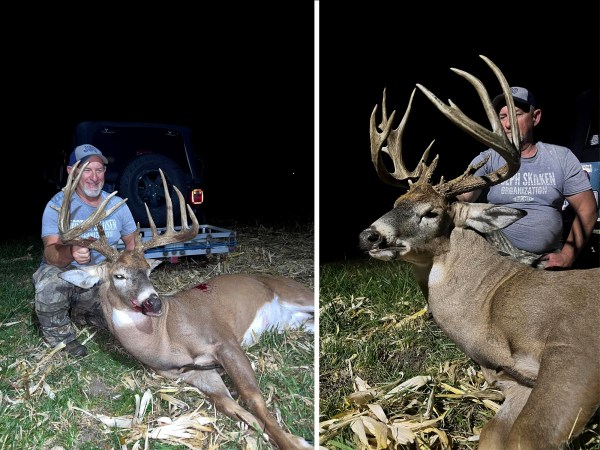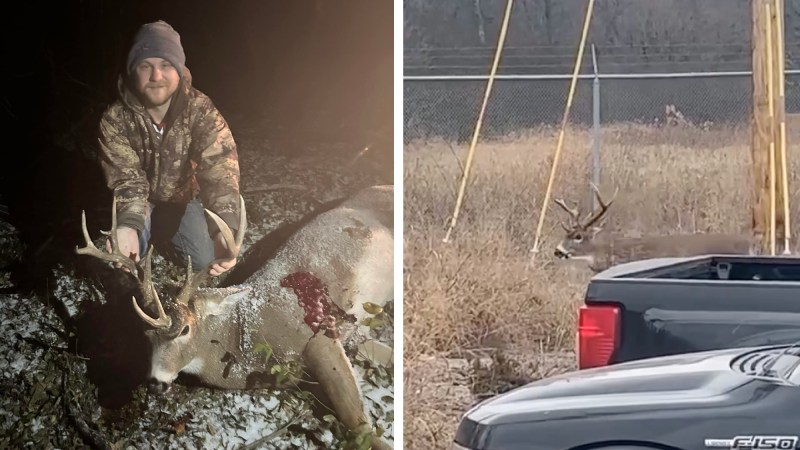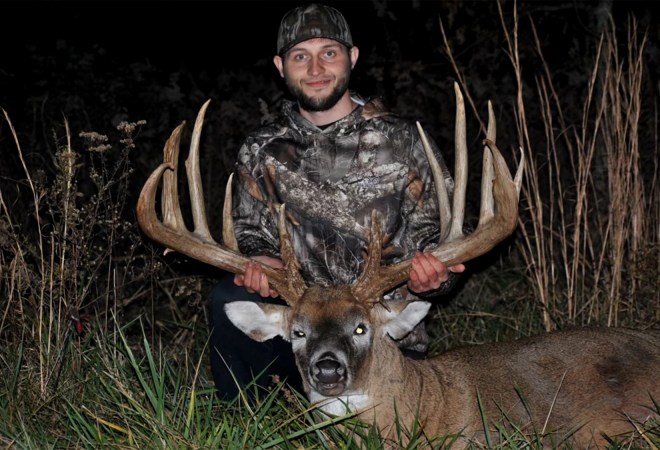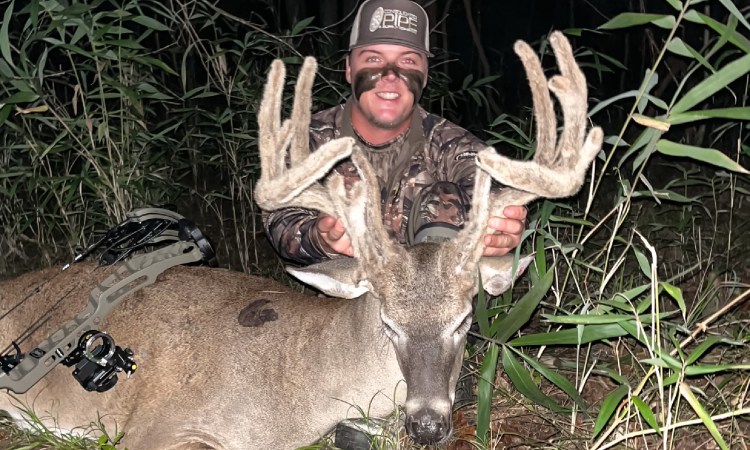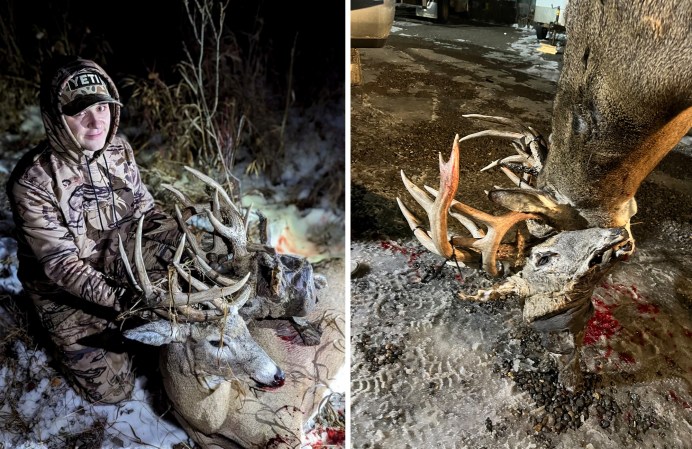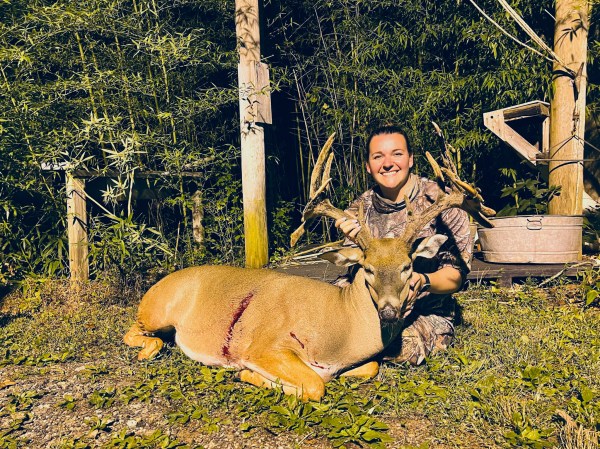All Johnathan Fortenberry needed was a change in the weather. He got that and more leading up to his hunt on Jan. 16, when a stiff north wind blew across southern Mississippi, dropping temperatures into the teens. After a cold morning sit, Fortenberry left his blind on private ground in Pike County and went home to get warm.
“I couldn’t take it more than a couple hours,” Fortenberry, who lives in Magnolia, tells Outdoor Life.
But as soon as he got back to his house, he started thinking about the buck that had been like a ghost all season. He’d been getting more trail camera photos of the deer in recent weeks, and he knew the buck was either living on the 8-acre property or somewhere nearby. Fortenberry could easily recognize the deer by the extra rows of tines on its two main beams, and he’d started calling it “Pinhead” because of the unique, pin-cushion like rack.
“I knew I’d be miserable going back in that blind, but I decided to suit back up for the weather and tough it out,” Fortenberry says. “I left for my blind just after noon.”
He didn’t see any deer for at least an hour after settling back into the ground blind. Then he started calling, using rattling antlers, and grunting. At one point, he accidentally whacked his hand with one of the antlers, which proved extra painful in the extreme cold. He sat on his hand for the next 15 minutes to ease the pain, about ready to give up.
But he decided to stick it out for another 30 minutes, continuing to rattle and grunt every so often. After one short rattling session, he saw movement in the brush about 90 yards away. He heard something big crashing through the thicket, then it stopped.
“I hit my grunt call, but nothing happened,” he says. “I waited five minutes and cracked the antlers again, and then I saw Pinhead sneak out of the brush, his head up and searching for where the sound came from.”
The deer stood 60 yards away when Fortenberry settled the scope of his 6.5 Creedmoor on Pinhead’s chest. He squeezed the trigger.

Photograph courtesy Johnathan Fortenberry
“I knew it was a good hit, and I saw him go about 30 yards and lay down in the same thicket he stepped out from.”
Pinhead never moved from there, and Fortenberry recovered the deer a short while later. After dragging it 150 yards up a hill covered in briars, he heaved the estimated 180-pound buck into his truck and headed home.
Read Next: Bowhunter Arrows Two Big Bucks in 2 Minutes, Watches Them Fall in the Same Spot
Fortenberry says the buck will eventually be scored by a taxidermist. He knows it won’t make any record books, and that’s fine with him. What he’ll remember most about the deer is his hunt. Although the 35-year-old hunter killed his first whitetail at the age of 7, his hunt for Pinhead proved there’s always more to learn.
“For a long time, I was pretty skeptical of rattling antlers and grunt-calling deer. And then I saw it work,” he says. “I’ve had other bucks come to those calls, too, and now there’s no question [in my mind] that rattling works.”

